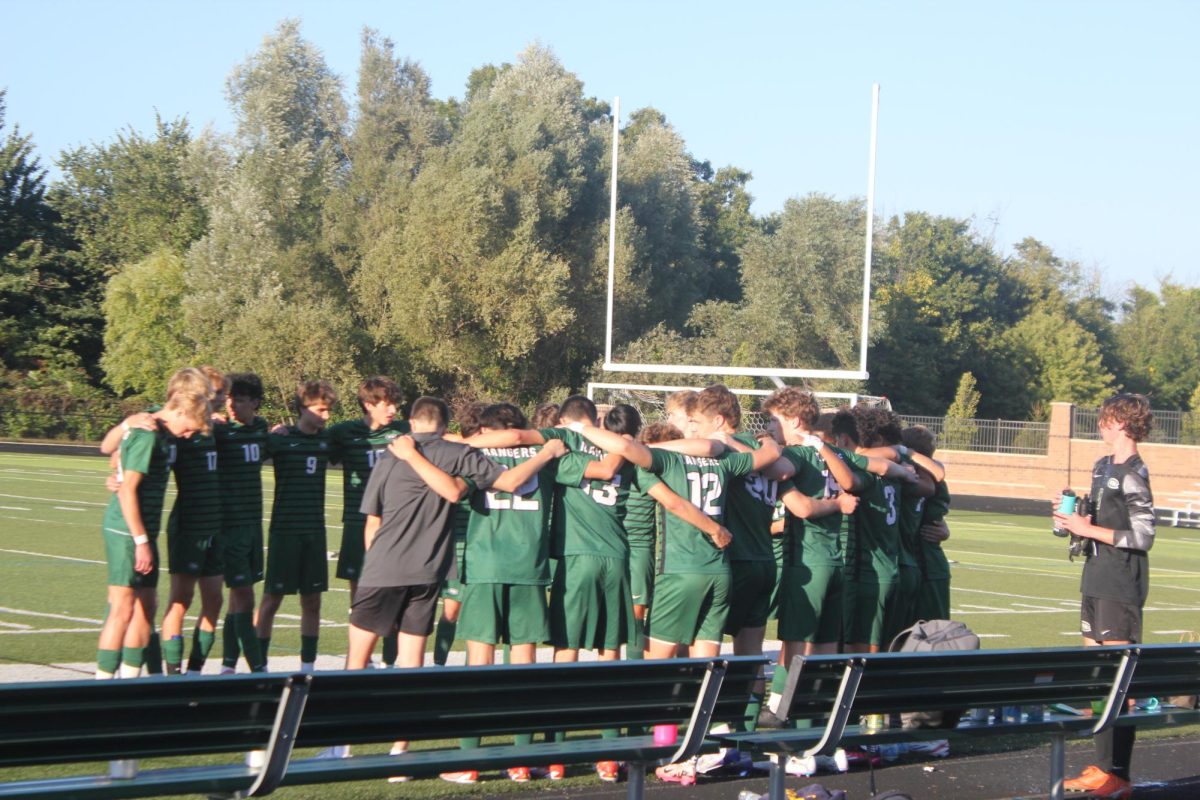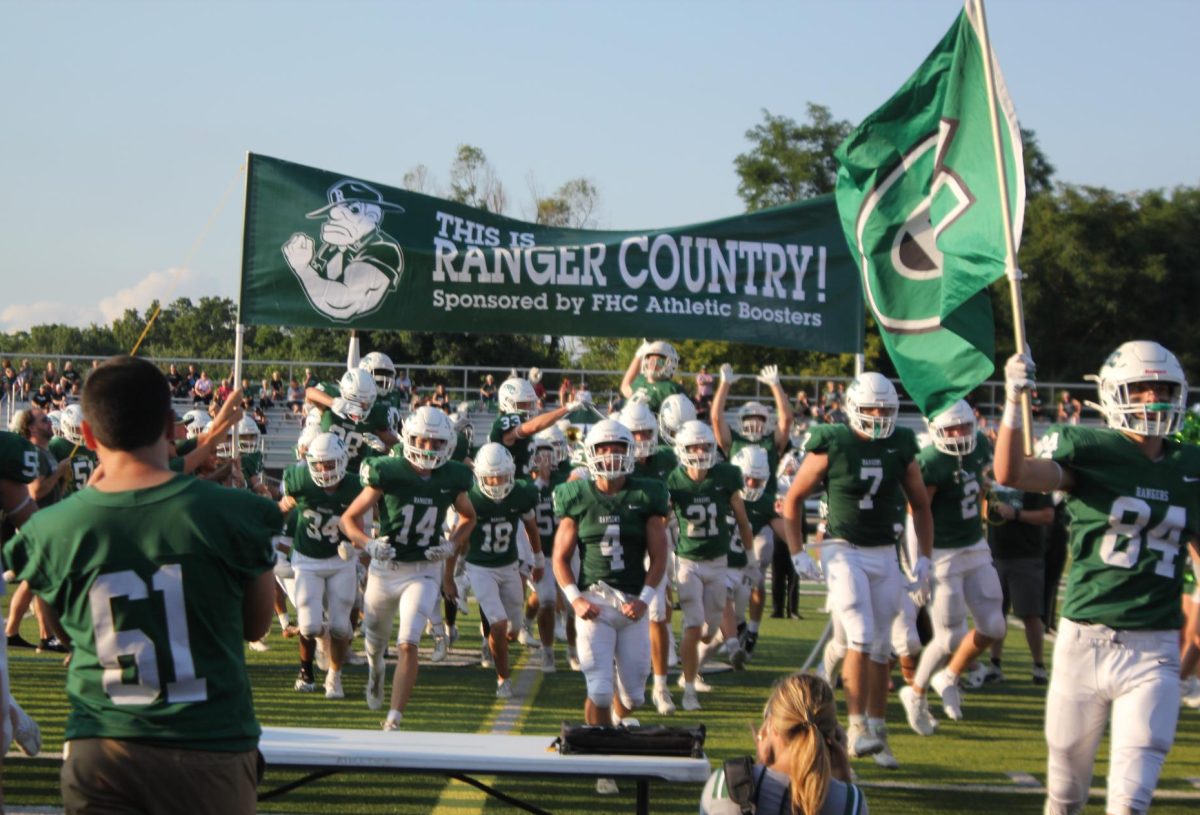Cafeteria food: to eat or not to eat?
Health teacher Pat Hartsoe and the lunch ladies reveal their opinions on the food served each day to the students of FHC.

Health teacher Pat Hartsoe stands before her class, hoping to make an impact upon her students as she tries to discuss with them the choices they should make when it comes to healthy eating. To her, people should eat healthy whether it is breakfast, lunch, or dinner. Yet, in her eyes, there are foods that should not be served in a school. As far as things go in her book, she believes the food served at the FHC cafeteria is less than satisfactory.
“In the past I’ve not been real impressed with cafeteria food,” Hartsoe said.
During the few times that Hartsoe has ventured into the cafeteria to get a glimpse into what is being served to the students each day, she has noted a few things about the aspect of the way it is run.
“I’ve noticed they do [things] just like at the grocery store, with all the junk food, all the candy bars, and all the Gatorade and stuff right up front, right before you cash out,” Hartsoe said. “Unfortunately [i think it’s] encouraging what they call impulse buying, like at the last second you grab a candy bar [or some other junk food].”
She hopes that at some point, the nutrition in the school cafeteria will improve due to the fact that many students rely on the meals that are served because they cannot bring food from home.
“I’m all in favor of overhauling or changing how we eat and what we think we need,” she said.
What Hartsoe believes in has already somewhat taken effect upon the school lunch choices, with new policies being put into place not just in Forest Hills, but all across the United States as well. These changes are being established due to new regulations formed by the United States Department of Agriculture, or the USDA. This organization has multiple goals for school cafeterias, which include an increase in fruits and vegetables, foods with lower sodium and reduced fats, and acceptable grains and proteins. But along with these changes come a few other requirements.
“All of our snack items have to be under 200 calories because of the government standards,” Cindy Stanard, a food service assistant at the FHC cafeteria, said. “[All of our food] is supposed to be healthy.”
Jan Harper, a fellow food service assistant at the FHC cafeteria, confirmed Stanard’s statement, commenting on what kind of food must now be served because of the change in regulations.
“Everything is whole grain now,” Harper said. “They’ve eliminated some of the stuff.”
Stanard elaborated more on the topic, stating what specific items have been changed and also what might be removed in the cafeteria. She said the pretzels are “about a third of the size they used to be” and the cookies have been reduced as well. The soup, said Stanard, may also be eliminated. Despite the alterations in choices, however, she believes the portions of food served per student have not changed.
Fellow food service assistant Jean Fitzpatrick added that with some of the foods served, the portions don’t seem like much.
“Such as with the chicken [strips], three of them is a serving,” Fitzpatrick said. “They figure out how much protein is in the chicken, and how much breading is on the outside, and they give us [an amount] and say we can’t serve any more.”
Harper also stated an example of the restricted amount of food provided. According to her, there is only so much meat that the lunch ladies can put on a sub sandwich.
“We have to give them 2 ounces of meat, and 1 ounce of cheese,” she said. “This is what is required, so it’s not like we’re trying to be skimpy on your sub when you ask for [more]. This is what they can have.”
Stanard added that as cafeteria workers, they don’t have much control over the food they serve.
“It looks like there’s hardly any food, and its small, but its what we have to serve,” she said. “It’s all regulated by the government.”
Stanard believes that with the amount of students they serve each day, the majority of them try to eat well. While some just take chips and cookies, most try to get some sort of a healthy meal. With the amount of fruits, vegetables, and other sorts of nutritious foods provided, she thinks a lot of teens are looking to eat healthy. Chris Nelson, the supervisor of the FHPS Food Service, agreed with Stanard, elaborating further on the topic of what the staff hopes to accomplish by serving beneficial foods in the cafeteria.
“Our goal is to help you guys become healthier and serve nutritious food that helps you concentrate throughout the day,” Nelson said.
Hartsoe also explained what she hopes eating healthier will achieve for the students of FHC.
“I think with this effort by the federal government or the FDA, their plan is if we could offer healthy things and make it easy to have them, and make it harder to grab the bad fatty sugary things, [then] over time people would just get in a better habit,” Hartsoe said. “ I think if the [junk] wasn’t just laying around, I think we could make some very solid changes.”

Kendra is in her second year on staff. She is Online Manager of the TCT website, and has won a MIPA honorable mention award for an informative story. This...
























































































